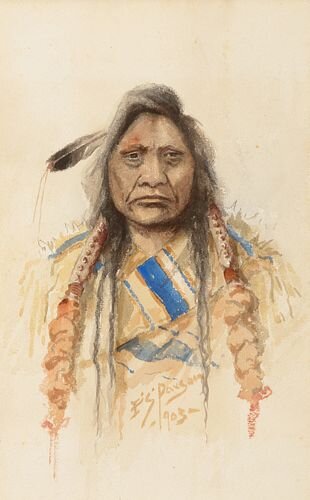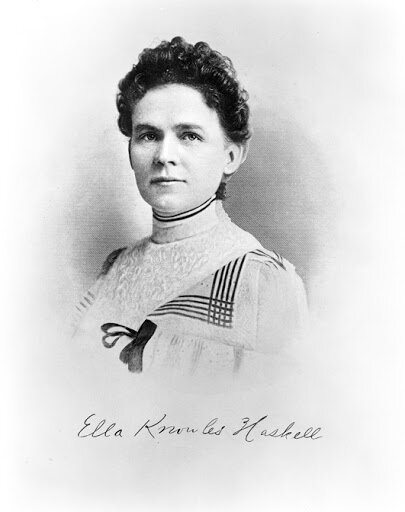
Butte, America’s Story Episode 80 - Salvation Army
“The territory appears to have better churches and educational facilities than one would at first expect, but still they are far removed from having as much as they need. Gambling is carried on publicly.”

Butte, America’s Story Episode 79 - Destroying Angel
Lee Mantle, mayor of Butte and U.S. Senator in the 1890s, got his start as a miner and entrepreneur. About 1880, he established the Diadem Lode Claim, a narrow block that extended from Montana Street between Broadway and Park to the intersection of Galena and Main, and a bit beyond.

Butte, America’s Story Episode 78 - Knights of Pythias Castle
As Butte grew, its people banded together in clubs and organizations reflecting their common interests, from cricket playing to ethnic and religious groups like the Knights of Columbus and Masons. Among the non-sectarian societies established in Butte before 1884, the Knights of Pythias was one of the longest-lived.

Butte, America’s Story Episode 77 - Caplice Block
Park and Main and Park and Montana Streets have pretty much always been the most important intersections in Uptown Butte. The southwest corner of Park and Montana has seen a long architectural evolution.

Butte, America’s Story Episode 76 - Omar Bradley Raid
Noted architect William White designed St. Paul’s church. It cost $10,000 in 1899, including a steeple (since removed) above the entry. Architect White was in partnership with A. Werner Lignell in 1900.

Butte, America’s Story Episode 75 - Frances Symons
In 2006 when Irene Scheidecker and I wrote the booklet on historic stained glass in Butte churches for Butte Citizens for Preservation and Revitalization (with support from the Montana Cultural Trust and the Butte-Silver Bow Urban Revitalization Agency), we encountered a small mystery which has now been unraveled.

Butte, America’s Story Episode 74 - Race Track
Horse races took place in Butte as early as 1879, when a $2,500 purse was advertised, but the sport really took off when the West Side Racing Association began about 1881, led by such Butte luminaries as Lee Mantle, Henry Valiton, William Owsley, and Patrick Largey.

Butte, America’s Story Episode 73 - Moving Pictures
In 1908, Butte had seven moving picture theaters, but even for Butte, that was overkill. Many were showing the same films as their competition, and patronage was too thinly spread for all to make profits.

Butte, America’s Story Episode 72 - Germania
The Germania mine was about a half mile almost due south of the Orphan Girl. It was established by a German immigrant about 1881. He promptly died, and his nephew, Louis “Lee” Freudenstein inherited the claim when he came to Butte in 1882.

Butte, America’s Story Episode 71 - The Owsley Block
People who lived in Butte in 1973 will probably remember the huge fire that consumed the Medical Arts Building on July 23. That building had dominated the corner since it was finished in 1892.

Butte, America’s Story Episode 70 - The Boom of 1916
Butte’s prodigious growth from perhaps 100 people in 1874 to more than 90,000 in 1917 wasn’t a continuous boom. The biggest spurts were probably the late 1880s, 1906-08, and the final explosion of construction in 1916-17.

Butte, America’s Story Episode 69 - Butte and The Nez Perce
In July 1877, western Montana was under a terror alert as Chief Joseph (also known as White Bird) and the Nez Perce went “on the warpath.” The Missoulian put out an extra on July 25, screaming “Help! Help! White Bird Defiant. Come Running.”

Butte, America’s Story Episode 68 - Cook With Gas
The Butte Gas Light & Coke Company was established in 1884. President Anthony Barret was a Kentucky native who came to Montana in 1875, first to Alder Gulch, then Pony, and finally to Butte in 1878 where his success in the saddle, harness and carriage business allowed him to branch out into other investments.

Butte, America’s Story Episode 67 - Giant Elk
If anything symbolized Butte’s over-the-top eclectic affluence, it might be the giant elk of 1916. Butte was near its peak population, and the Fourth of July holiday that year coincided with the statewide Elks convention, which drew 30,000 members to Butte from across the state and beyond.

Butte, America’s Story Episode 66 - Colusite
For all its mineral wealth, Butte is home to just one type locality for a mineral, the place where that mineral was first found and described. Colusite is a rare copper-vanadium-arsenic sulfide named for the Colusa Claim on the east side of the Butte Hill, where Meaderville developed.

Butte, America’s Story Episode 65 - The Nine Mile
We’re all familiar with Four Mile Road and the Five Mile House out Harrison Street, but the way east from Butte was dotted with inns – Mile Houses – at least at 4, 5, 9, 10, 11, and 18 miles from the heart of uptown Butte, the last one about five miles east of the Continental Divide.

Butte, America’s Story Episode 64 - Ella Knowles Haskell
Ella Knowles Haskell must have been an amazing woman. She’s one of the few women with an entry in the 1500-page inappropriately named “Progressive Men of the State of Montana.”

Butte, America’s Story Episode 63 - Easter Rising
In April 1916, Butte’s newspapers were full of front-page stories of the war in Europe and General Pershing’s unsuccessful expedition to Mexico to capture revolutionary Poncho Villa. Meanwhile, Ireland was boiling.

Butte, America’s Story Episode 62 - Curling Club
December 3, 1905 saw Montana’s first recorded curling match, among members of the newly established Butte Curling Club. Scotsmen led by Donald McMillan, a cashier at W.A. Clark’s Western Lumber Company, organized the club August 31, 1905, with 41 charter members.

Butte, America’s Story Episode 61 - Auto Show
here were Cadillacs, Fords, Dodges, and Buicks, but also Velies, Hudsons, REOs, Pierce-Arrows, Chandlers, Franklins, Studebakers, Saxons, Wintons, and Maxwells. The April 1916 Butte Auto Show displayed 8,200 vehicles worth more than $250,000 – and that’s 1916 dollars.